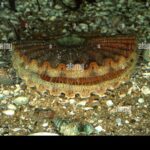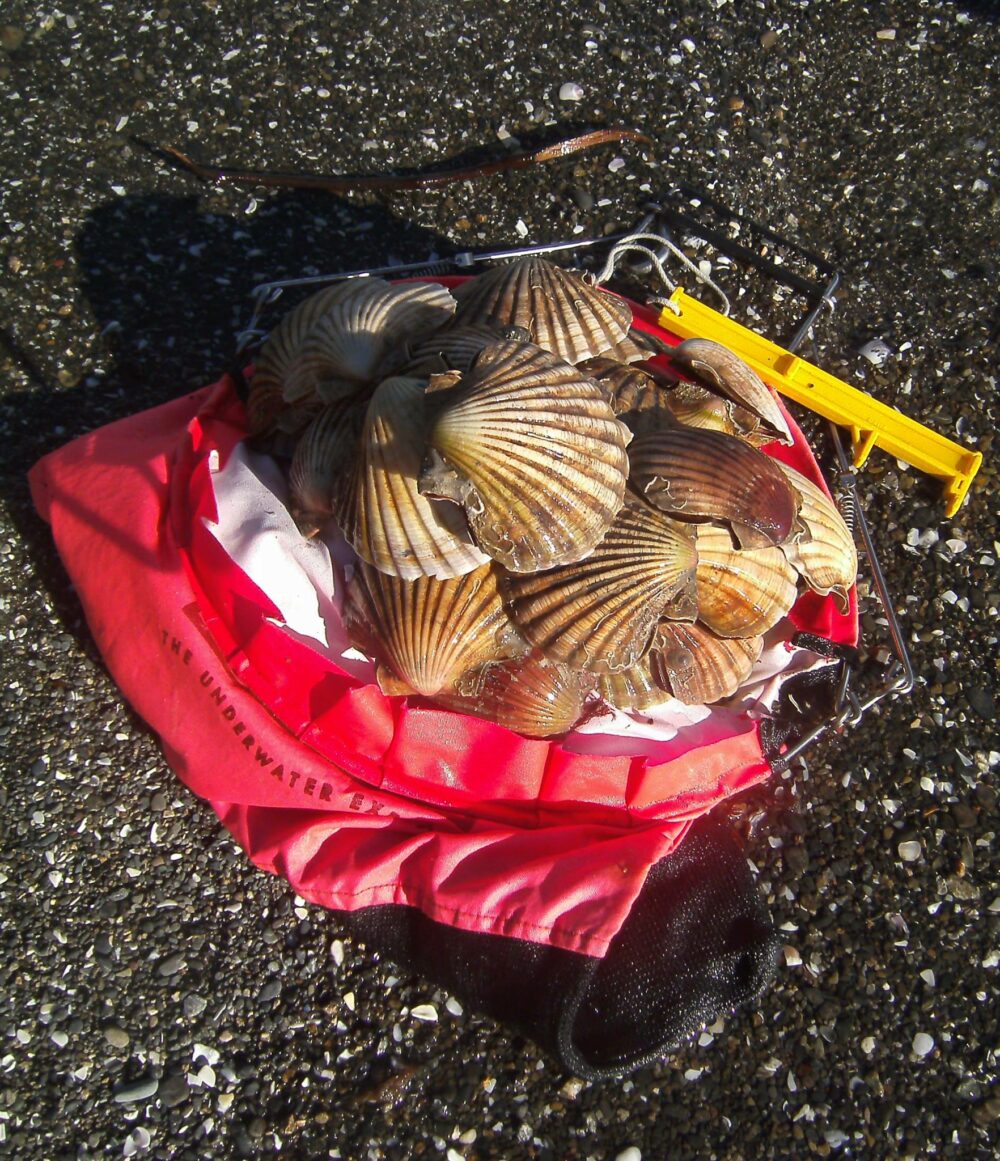Scallops, common name ‘The New Zealand Scallop’, is a bivalve mollusc of the family Pectinidee, the scallops Pecten Novaezealandiae is a completely free-living, mobile and somewhat migratory. Scallops can swim with brief bursts of speed by clapping their shells together (Jet Propulsion)
The two valves are asymmetric. The left valve is convex while the right is flat. The concave valve has approximately 16 ribs. The colour is variable; however, the valves are usually a whitish pink, but sometimes can be dark reddish brown.


Habitat:
Scallops are found on the seabed of sheltered coastal waters ranging from sand, silt and mud, from low tide level to depths of 90+ metres or more. Large populations are more common at depths of 10-25 metres. Scallops are endemic to New Zealand and are found throughout the 3 main islands and out to the Chatham Islands.


Breeding Habits:
Sexually mature individuals are hermaphrodites. They are broadcast spawners. The season when the organisms spawn is variable between locations. However, in Tasman Bay, the peak time is from November to March. Fertilisation occurs and create planktonic (free swimming) larvae or ‘spat’. This life stage is conserved for approximately three weeks. Metamorphosis occurs (just like in butterflies) and the larvae change from a planktonic to a benthic (bottom swelling) existence, attaching itself onto the seafloor. The attachment lasts until the individual is at least five millimetres long. The individual then detaches from the substrate and begins to grow into an adult. Where the spat land is a big determining factor in their survival rate. Spat grow best when they settle on clean surfaces free of mud and silt, they love a clear and sandy bottom. If the currents push the scallop larvae out to sea, they may be lost forever. Maturity is usually achieved by 18 months. Scallops are actually fast-growing and short-lived. On average, a single 90mm scallop has taken one year to grow to this size, before slowing down and growing at a rate of about 5mm per year. This puts a 100mm scallop at about three years old .


Aquaculture:
Enhancement is the name given to techniques designed to boost the natural recruitment or survival of young animals or seaweed in the wild.
In New Zealand, scallop enhancement had been very successful in Tasman and Golden Bays. Scallops are cultivated by suspending spat-collecting bags in coastal waters during summer. Thousands of scallop larvae settle out of the plankton onto the fine feathery surface of the bag. The larvae are left to grow to a suitable size before they are collected and released onto known natural scallop beds – this is known as ‘seeding’. There they grow for one or two years before the bed is harvested by dredging.
Food Chain:
Natural predators of Scallops are Sea stars, Octopus and of course Humans. Scallops are a favourite meal for the Reef Star that will take smaller scallops, <50mm. Larger scallops tend to be able to escape by ‘clapping’ their shells and swimming off a short distance before dropping back down onto the sea floor. You may have seen this on one of our Wellington Harbour dives.
The New Zealand scallop is a large export industry of New Zealand. Scallops are considered a delicacy with the large white abductor muscle is eaten; sometimes, the orange and white gonad is eaten, as well – YUM! Recreational and commercial fishing of the species is allowed at particular times of the year during the ‘Scallop Season’. The size and number which can be caught are under control of the quota management system, size and bag limits can vary from region to region. Unfortunately, even with management several scallop regions have been closed including areas in the Marlborough Sounds, Coromandel & Hauraki Gulf.


Remember to check https://www.mpi.govt.nz/fishing-aquaculture/recreational-fishing/fishing-rules for your area.
